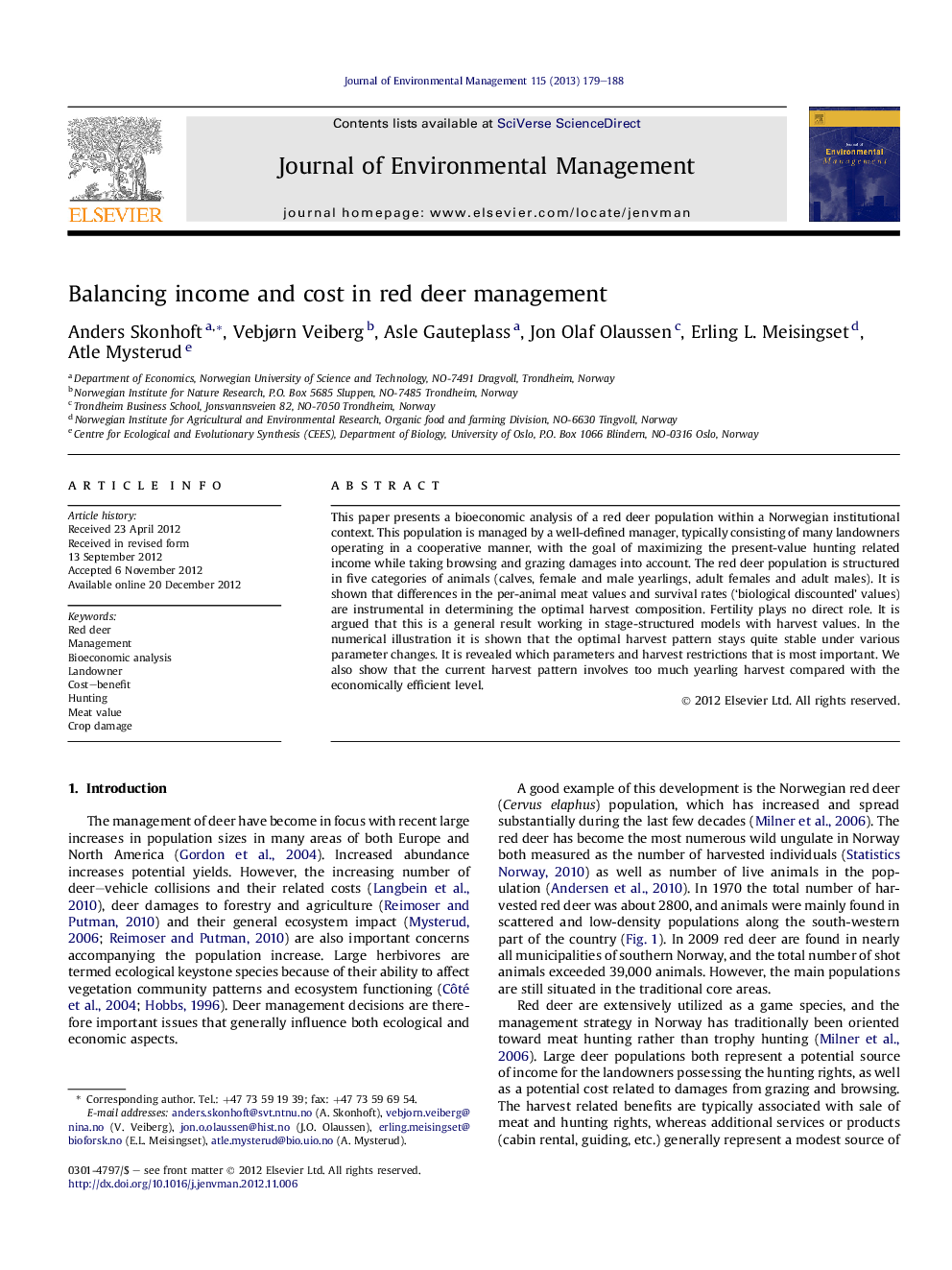| Article ID | Journal | Published Year | Pages | File Type |
|---|---|---|---|---|
| 1056238 | Journal of Environmental Management | 2013 | 10 Pages |
This paper presents a bioeconomic analysis of a red deer population within a Norwegian institutional context. This population is managed by a well-defined manager, typically consisting of many landowners operating in a cooperative manner, with the goal of maximizing the present-value hunting related income while taking browsing and grazing damages into account. The red deer population is structured in five categories of animals (calves, female and male yearlings, adult females and adult males). It is shown that differences in the per-animal meat values and survival rates (‘biological discounted’ values) are instrumental in determining the optimal harvest composition. Fertility plays no direct role. It is argued that this is a general result working in stage-structured models with harvest values. In the numerical illustration it is shown that the optimal harvest pattern stays quite stable under various parameter changes. It is revealed which parameters and harvest restrictions that is most important. We also show that the current harvest pattern involves too much yearling harvest compared with the economically efficient level.
► A bioeconomic analysis of a red deer population within a Norwegian institutional context is presented. ► Both hunting value and grazing damage are included. ► The population is divided in five age and sex classes, and the optimal hunting composition is examined. ► The optimal hunting composition is compared to the existing hunting practice.
